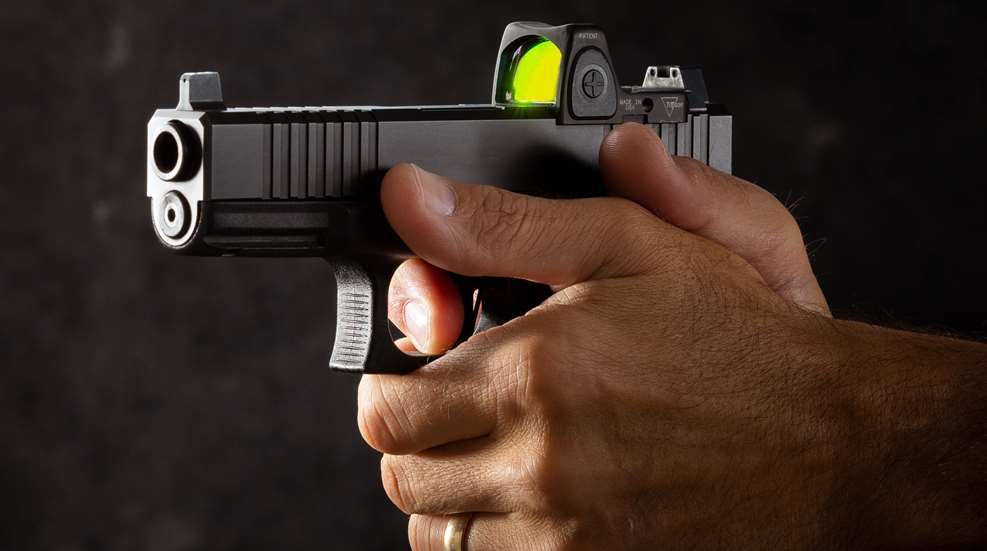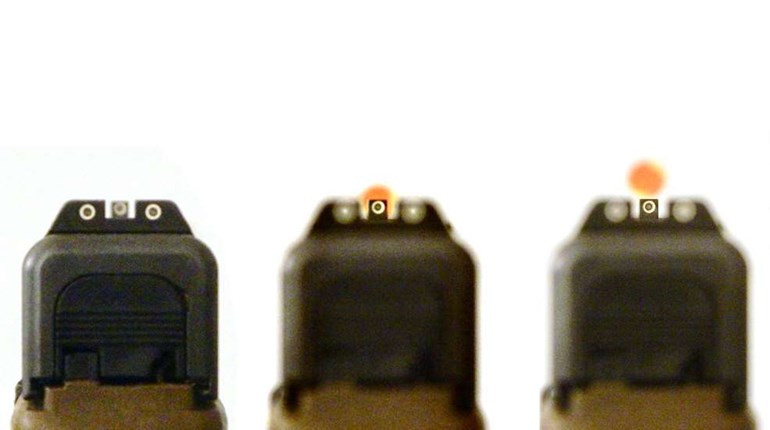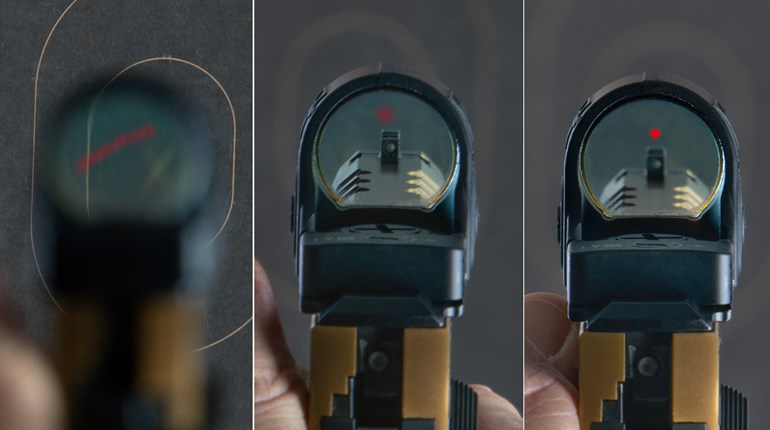
Ever since the practical usage of pistols in combat, generally attributed by historians to the Battle of St. Quentin in 1557 of the Habsburg-Valois Wars, (1494-1559, rendering 16th century plate armor essentially useless), pistoleers have struggled with mastering pistol trigger performance.
It's just as difficult today, whether combat or competition application, as it was nearly a half-millennia ago to press off timely and accurate round placement under duress. The result is to produce sufficient muzzle discipline as to not disturb muzzle alignment throughout the entire fire control process. Much easier said than done, especially at higher speeds.
Modern day pistol masters and grandmasters share the importance of developing good trigger control skills at higher speeds with their student cadre and demonstrate how you can have all your other fundamentals in place, but a bad trigger press can cause the entire built shot to crumble.
Competition Master level shooter and instructor Frank Proctor describes the optimal trigger press as one that is comfortable, fluid and repeatable. In full concurrence with other Master level shooters, Proctor’s description warrants a deeper dive for those ‘students of the trigger press’ who, like myself, acknowledge the depth and breadth of pistol trigger performance.
Comfort
Because it is not something that occurs anywhere in nature, the entry level shooter is nowhere near comfortable with an explosion going off at the end of their arm. As a result, touching off a pistol round causes them to wince, close their eyes, prematurely move the muzzle out of alignment and or all the above. The first step in mastering the trigger press is to become desensitized or inoculated to that sudden burst of energy and become familiar with the ensuing physical actions.
Seasoned shooters who are familiar with the fire control experience have developed a greater level of familiarization so much so that they have become comfortable without blinking, flinching, or otherwise causing gross muzzle misalignment.
However, unlike a master-level shooter, the wheels fall off even for an experienced shooter at those operational speeds beyond their skills envelop and comfort zone. In other words, there is discomfort experienced past a certain skill level which the consummate professional seeks to make comfortable. It is for these eternal students of the gun that this information will best resonate.
Comfort is eventually supplanted by confidence, rewarded with consistency, and results in competence only at the price of correct repetitions, forged under duress and the pressure of multiple layers of complexity. Once cannot achieve a surplus of confidence, consistency or competence without first gaining comfort in any shooting fundamental, especially good, (appropriate and reliable), trigger control.
Fluidity
How is fluidity ascribed to trigger control? The answer is how well you press the trigger. There are more ways to get it “wrong” than to get it right.
The master knows that trigger speed is secondary to trigger fluidity. To further break it down there are two movements of the trigger: one to the rear of the trigger guard and the other to or past reset moving forward.
In those two directions there are nine trigger positions on most pistols (depending upon manufacturer and third-party trigger jobs), these are:
- At rest
- Slack (taking up slack)
- Getting to the wall (a term coined by Grandmaster Rob Leatham)
- Creep (movement after the wall but prior to the break)
- The break (sear spring release)
- Back travel
- Stop (back of trigger guard)
- Forward travel back to and passing reset
- Forward slack (if any).
Fluidity is defined as minimally moving through all nine of these positions at a steady pace like that of pressing a constant or steady stream of water from the muzzle of a summer toy water gun. Once could even define this as a rate of press.
At the higher levels of pistol performance, the trigger speeds in each direction (press to the rear and then the release) are not the same. To shoot faster is to return the trigger faster to reset. Rob Leatham is quoted as saying “trigger speed is in the reset.”
Regardless of speed or direction, the concept is a steady rate of press and release. The more abruptly you try to alter trigger speeds in either direction the greater your “hold control,” an NRA term describing your ability to keep the muzzle from moving out of alignment with the target. A choppy or non-fluid trigger press specifically to the rear spells disaster for those with weak or no Hold Control.
Repeatability
Have you ever had a stellar run where you did everything right and you hit everything fully accountable to accuracy and time way above your average and certainly exceptional for your skill level? Yes, it was a great run, now was that like catching a lightning bolt with your butt cheeks or can you do it again four more times? The mark of the master is being able to do it five times in a row or minimally 84 percent of the time that you are asked to do it on demand.
A very good shooter may be able to do it 60 percent of the time and an excellent shooter 70 to 75 percent of the time but only a master can do it 80 to 85 percent of the time on demand. Even further down the line are the skills of a Grandmaster who can do it 95 percent of the time or better without failure.
Repeatability is often referred to as “on-demand performance”: Can you do that thing you did over again on demand. Pistol trigger performance is what separates the novice from the master and the pathway to upper-level performance is comfort, fluidity and repeatability.





































